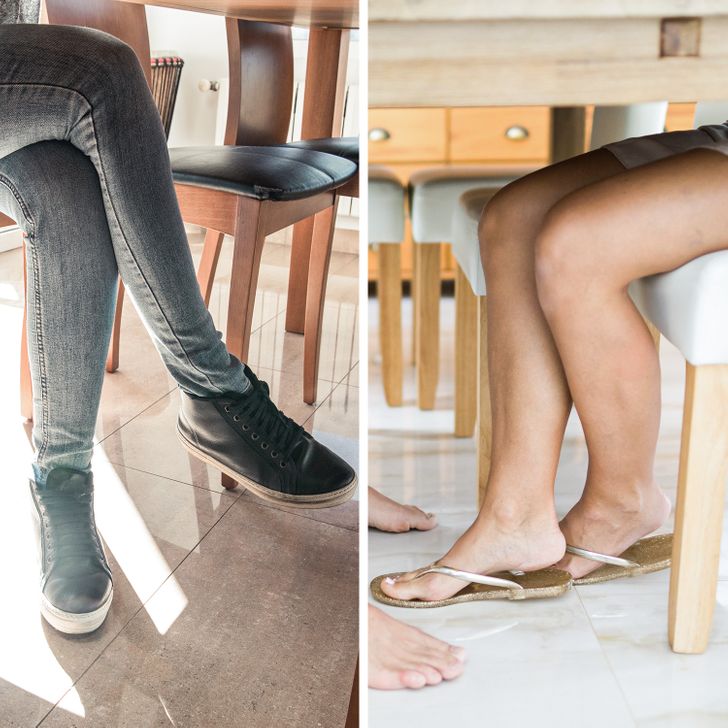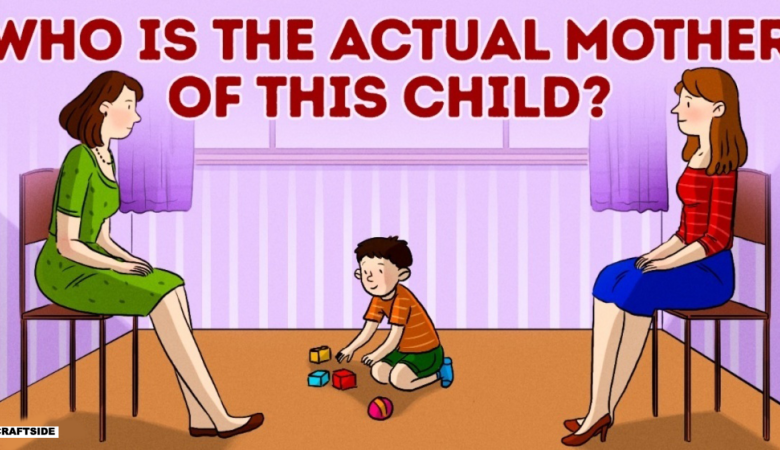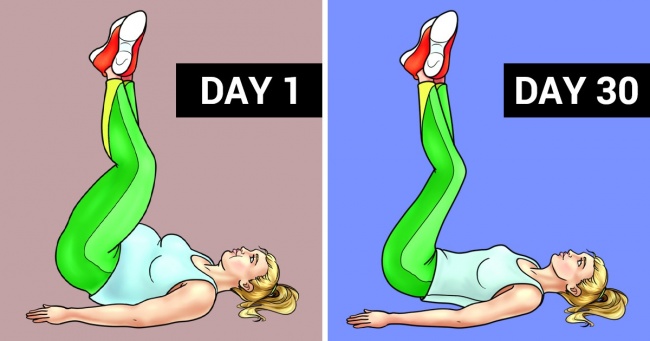In our everyday interactions, nonverbal cues speak volumes about our inner emotions and self-confidence. Body language experts and psychologists agree that subtle gestures can reveal underlying insecurities that words often mask. Whether in a business meeting, a social gathering, or a personal encounter, understanding these cues can help you gauge a person’s confidence and potentially improve your own self-improvement strategies. In this comprehensive guide, we delve into the science behind seven subtle gestures that can reveal insecurity right away and discuss how you can use these insights to enhance your communication skills and personal development.
Understanding body language is not only useful in personal relationships but also in professional settings. For instance, leaders and managers who are aware of non-verbal signals can better assess team dynamics and foster an environment of trust.
Slouching: The Tell-Tale Sign of Insecurity in Body Language

One of the most common indicators of insecurity is slouching. When someone consistently adopts a slumped posture, it often reflects low self-esteem and a lack of confidence. Research suggests that poor posture not only affects how others perceive you but also influences your own mood and energy levels. A slouched position can signal that a person is disengaged or trying to hide their vulnerability.
Slouching can be observed in both professional and casual settings. In a business meeting, for instance, a person who slouches might be perceived as lacking authority or conviction. On the other hand, individuals who maintain an upright posture are more likely to be seen as confident and approachable. This connection between posture and perceived confidence is supported by studies in social psychology, such as those referenced in Psychology Today.
To counteract the effects of slouching, many experts recommend posture improvement techniques and even suggest incorporating exercises into your daily routine. Simple adjustments—like standing tall and engaging your core—can boost not only your physical appearance but also your mental outlook.
Crossing Your Arms and Legs: Defensive Posture Indicating Insecurity

Another subtle yet powerful gesture that can indicate insecurity is crossing your arms or legs. While this position may be comfortable for some, it often serves as a subconscious barrier that protects against perceived threats or vulnerabilities. In many cases, crossing one’s arms can signal that the person is closed off to new ideas or unwilling to engage fully in a conversation.
This defensive posture is commonly observed during stressful or high-pressure situations. For example, during job interviews or critical meetings, a candidate who crosses their arms might inadvertently send signals of resistance or defensiveness. Body language experts argue that such gestures are rooted in a fear of being judged or rejected. To learn more about the impact of defensive body language, you can refer to Harvard Business Review’s insights on nonverbal communication.
Moreover, crossing arms or legs can restrict the natural flow of communication, reducing the chance for genuine interpersonal connection. In contrast, open body language—where the arms remain relaxed and uncrossed—tends to create an atmosphere of trust and openness, both in personal relationships and professional settings.
Fidgeting: Unintentional Habits That Expose Nervous Energy
Fidgeting is another gesture that can betray underlying insecurity. Whether it’s tapping fingers, shaking legs, or constant shifting, these small, seemingly unimportant movements often indicate nervous energy and discomfort. Fidgeting is particularly common among individuals who are anxious or uncertain about their surroundings, and it may serve as a coping mechanism to alleviate stress.
In business and educational environments, excessive fidgeting can be misinterpreted as a lack of focus or disinterest. However, it’s important to recognize that these behaviors are usually involuntary responses to internal anxiety. Understanding this can help both observers and the individuals themselves take steps toward addressing the root causes of such behaviors.
To manage fidgeting, professionals in the field of confidence coaching often suggest mindfulness practices and stress reduction techniques. For instance, engaging in deep breathing exercises or short meditation sessions can help reduce anxiety and promote more controlled body language. For further reading on how to curb nervous habits, visit Verywell Mind’s guide on anxiety management.
Hiding Your Hands in Your Pockets: Concealing Vulnerability Through Nonverbal Cues

The simple act of hiding one’s hands in pockets can also be a subtle sign of insecurity. This gesture is often interpreted as an attempt to hide vulnerability or conceal nervous energy. When people tuck their hands away, they might be subconsciously trying to protect themselves from potential scrutiny or judgment.
In social settings, individuals who hide their hands may appear less engaged or less confident. This can hinder the flow of conversation, as visible hand gestures are an important aspect of effective communication. In contrast, open and relaxed hand movements signal honesty, openness, and confidence, which are crucial in building rapport and trust.
Self-improvement experts recommend being mindful of your hand placement during conversations. Instead of hiding your hands, try using them to emphasize points or engage more naturally with your audience. Adopting this practice can improve your overall presence and enhance your interpersonal skills. For more expert advice on body language and confidence, check out Forbes’ coverage on nonverbal cues.
Covering Your Mouth with Your Hand or Finger: Masking Emotions and Insecurity

Covering your mouth during conversation—whether by placing a hand or finger over it—can be a subtle yet powerful indicator of insecurity. This gesture may signal that the person is self-conscious about what they are saying or is trying to hide their true emotions. In many cases, this behavior is linked to feelings of embarrassment or the fear of being misunderstood.
This nonverbal cue can be particularly noticeable during moments of stress or when discussing sensitive topics. Covering the mouth not only obstructs clear communication but may also suggest that the individual is not fully confident in their words. This can have negative implications in professional environments, where clear and confident communication is vital for leadership and collaboration.
To overcome this tendency, public speaking and communication experts advise practicing mindfulness and self-assurance techniques. By becoming aware of your body language, you can work to eliminate these subtle habits and project greater confidence. For additional strategies on improving public speaking and body language, explore resources like Toastmasters International.
Sitting on the Edge of a Chair: Subtle Signals of Anxiety and Low Confidence

How a person sits can reveal a lot about their internal state. Sitting on the edge of a chair is a subtle gesture that often indicates anxiety or low confidence. This posture suggests that the individual may be uncomfortable or uncertain in their environment, as they subconsciously prepare to leave at a moment’s notice.
In professional settings, this behavior might be interpreted as a sign of restlessness or disinterest, potentially undermining the speaker’s credibility. On the other hand, sitting back comfortably in a chair with both feet on the floor exudes calm and stability, traits that are highly valued in both personal and professional interactions.
For those who notice this behavior in themselves, small adjustments can make a significant difference. Techniques such as deep breathing or short mindfulness exercises before important meetings can help calm nerves and promote a more relaxed seating posture. To read more about the connection between body language and confidence, visit Psych Central’s article on body language.
Unnatural Smile: Forced Expressions That Reveal Inner Turmoil

An unnatural smile—one that appears forced or insincere—is another nonverbal cue that can indicate insecurity. Unlike a genuine smile, which engages the entire face and reflects true emotion, a forced smile often involves minimal muscle movement and may be used to mask underlying feelings of discomfort or anxiety.
Forced smiles can be particularly damaging in both social and professional settings. In a business context, an insincere smile can undermine trust and make interactions seem transactional rather than genuine. Similarly, in personal relationships, a forced smile may create distance and reduce emotional connection.
Body language experts emphasize the importance of authenticity in facial expressions. Genuine smiles not only improve interpersonal relationships but also have been linked to better mental health and lower stress levels. For more research on the impact of facial expressions on interpersonal communication, check out Scientific American’s coverage on the psychology of smiling.
To cultivate a more natural smile, experts suggest practicing mindfulness and engaging in activities that boost your self-confidence. Confidence coaching and self-improvement programs can also offer valuable tools for developing a more authentic, positive demeanor.
Beyond These Gestures: The Bigger Picture of Insecurity and Personal Growth
While these seven subtle gestures can serve as indicators of insecurity, it is important to remember that body language is just one piece of the puzzle. Many factors, including cultural differences, personal habits, and even momentary stress, can influence nonverbal cues. However, by paying attention to these signals, you can gain valuable insights into your own behavior and the behavior of those around you.
In the realm of personal development and self-improvement, understanding and modifying body language can be a powerful tool for building confidence. Whether you are pursuing leadership roles, engaging in high-stakes negotiations, or simply striving for better social interactions, mastering nonverbal communication is key.
For those interested in deepening their knowledge, many reputable sources offer insights into the psychology of body language. The American Psychological Association (APA) and Harvard Business Review frequently publish articles and research studies that examine the relationship between nonverbal cues and personal success.
Conclusion: Embracing Authenticity Through Awareness of Body Language
In conclusion, subtle gestures such as slouching, crossing your arms, fidgeting, hiding your hands, covering your mouth, sitting on the edge of a chair, and displaying an unnatural smile can all be indicators of underlying insecurity. Recognizing these signs in yourself and others is the first step toward fostering authentic communication and personal growth.
By understanding the science behind these body language cues, you can begin to address the root causes of insecurity and work towards building genuine self-confidence. Whether you are a professional aiming to enhance your leadership skills or someone interested in self-improvement, paying attention to nonverbal signals can provide valuable insights into your inner world.
Remember, every gesture tells a story. By learning to interpret these silent signals, you not only become more empathetic and understanding but also gain the tools needed for meaningful personal development. Embrace the journey of self-discovery and let your body language reflect the confidence and authenticity that lies within you.
For further reading and expert advice on body language and confidence, consider visiting trusted resources like Psychology Today and Forbes’ leadership section. These platforms offer a wealth of information that can help guide you on your path to a more confident and self-assured life.
In a world where first impressions are formed in seconds, understanding and mastering nonverbal communication is not just a personal benefit—it’s a valuable asset in both your personal and professional endeavors. By recognizing and addressing subtle gestures that signal insecurity, you can take proactive steps toward becoming the best version of yourself. Enjoy the journey to greater self-awareness and let your authentic confidence shine through every gesture.









Leave a Reply